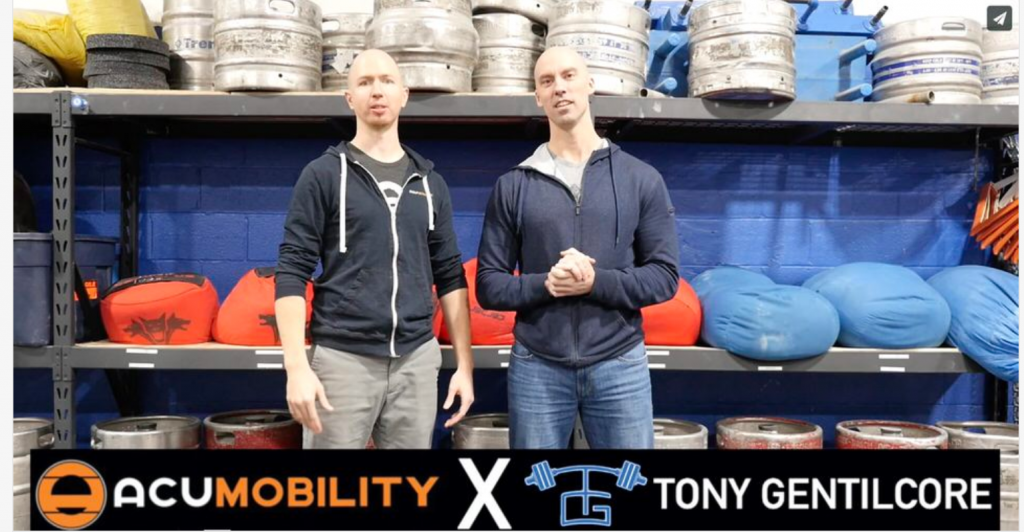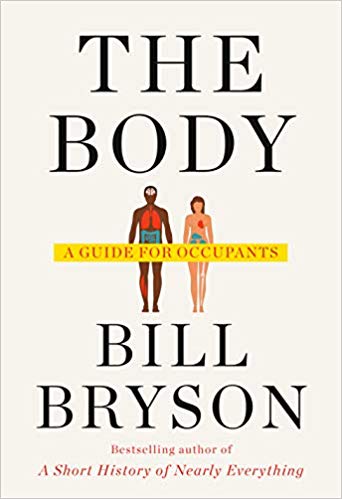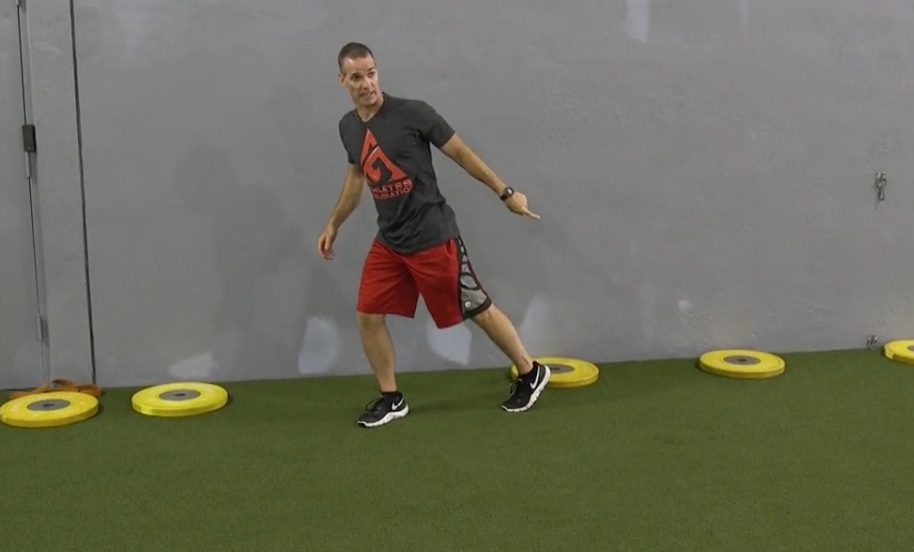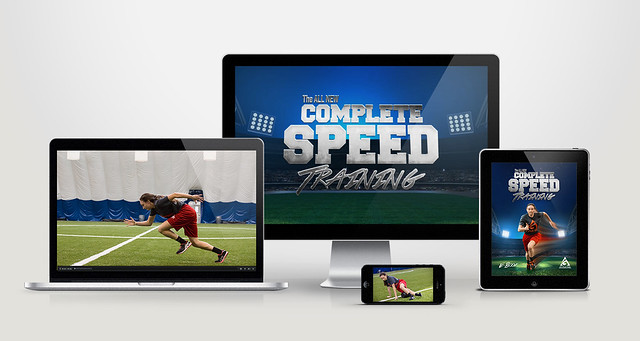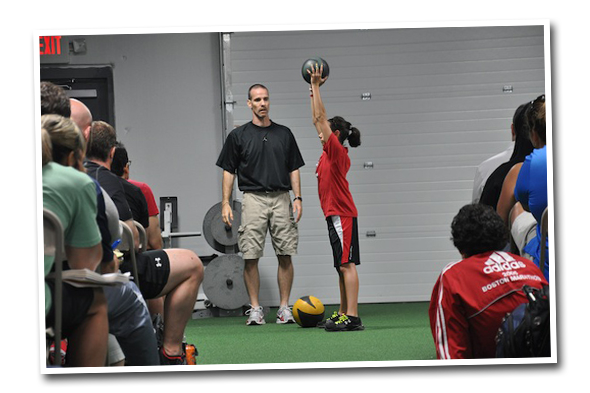“I’m not fast, but I like to pretend I am on the internet.”
Okay, I’m kinda fast.[footnote]Hahahahaha. Actually, not really.[/footnote]
Well, I mean, as far as 39 year olds who are roughly 15 years removed from playing any competitive sports are concerned, I’m lightening quick.
Besides, baldness increases aerodynamics right?
Truth be told: as a strength and conditioning coach it’s not required I win the 100m in the Olympics in order to speak to the topic at hand. Granted I should be able to demonstrate a sprint or sprint mechanics without resembling a one-legged pirate or worse…blowing out a hamstring.
But I don’t need to be a world-class sprinter myself in order to coach or teach others to be able do it. Which is why I’ve been making my way through Lee Taft’s Certified Speed and Agility Coach curriculum to better augment my coaching abilities.
At the end of the day it’s about having the ability to break down movement into more manageable parts and more importantly, having the ability to get your athletes into better positions (in order to express speed or strength or whatever).
CSP Coach, George Kalantzis, demonstrating how to use sled work to improve torso angle for linear acceleration.
And when it comes to getting people into better positions – especially as it relates to linear acceleration – as Lee notes, we don’t need to get too fancy with our toolbox.
Which Begs the Question: What Is Linear Acceleration?
Good question.
I’ll tell you what it’s not….sprinting/top speed.
Sprint/Top Speed = more perpendicular posture.
Acceleration = more forward pitch or torso inclination.
When we’re coaching (linear) acceleration it’s important to respect that the idea here is to produce a lot of force quickly. However, that force is still going to be longer in terms of foot contact time compared to top speed.
Linear acceleration requires getting things started and getting the center of mass moving. It’s different than top speed.
- We must produce a lot of force down and away
- We also need an extremely long arm action, which then coordinates with the same side leg and high knee drive. All of this accomplishes a ROM of the leg which then allows the athlete to produce as much force as needed to finish the push off to get into the next stride.
It sounds like a lot – and complicated – but I assure you it’s not. This isn’t to imply, of course, that some attention to detail isn’t warranted. If it were easy everyone would be a challenging Usain Bolt to a game of Duck-Duck-Goose.
But there are some easy and ingenious strategies in the form of EXTERNAL CUEING that’ll help accomplish all of the above.
Linear Acceleration Troubleshooting
To reiterate: linear acceleration is not the same as top speed. First and foremost, with acceleration we’re working on starting speed which implies different joint angles and positions.
1) I already mentioned above that top speed requires more of a perpendicular posture and acceleration implies more forward pitch of the torso.
As such, a major mistake many athletes make out of the gate is, well, a poor starting position. Like this:
Here I’m starting way too upright and my hips (and shoulders) are too far back. Not a conducive position to produce horizontal force.
Ideally we’d want to start in a more staggered stance with the hips in front of push off (this will make it easier to gain momentum and get mass moving), which implies a more angled torso. Too, we want the shoulders to be in front of the hips
2) More Aggressive Arm Action
In acceleration the back side needs to be long, front side short. The back side is what matters in acceleration. The front side becomes more important during top speed.
Lee Taft hammers this point home time and time again throughout his CSAC course.
To that end, a common mistake made is that people aren’t aggressive enough with their arm action.
https://www.youtube.com/watch?v=HpzkwBgZoVc
You’ll notice my back arm “stays short” and as a result both my arms and legs are choppy.
A beautiful external cue to use here is to tell the athlete to be more aggressive with “THROWING THE HANDS BACK.”
https://www.youtube.com/watch?v=6v193yEgzjs
Looks sexier, right?
And, subsequently, the more aggressive arm action “nudges” a more aggressive forward action of the knee….with minimal additional cueing.
But what if all of that still doesn’t get the desired effect?
The Magical World of External Cueing
A brilliant corrective strategy[footnote]Corrective exercise doesn’t always mean we need to over-coach or strengthen anything or work on motor control. In this case “corrective exercise” is attributed to some cue that immediately effects the athletes ability to change movement.[/footnote] I “stole” from Lee Taft is to give the athlete a target to shoot for. This is external cueing at its finest.
External cueing takes into consideration what the body is doing in space and implies direction, intent, and action.
The corrective in this case would be to place a med ball – or anything: cone, hurdle, Ewok action figure – a few feet away from the athlete’s starting position. The athlete must then explode, “CHASE HIS SHOULDERS,” and get past the object within one step.
https://www.youtube.com/watch?v=51B3WnDCq6w
As you can see, this immediately incorporates a better arm action. Better arm action mirrors a greater leg action, which then produces more horizontal displacement.
Giving the athlete a target or something to shoot/aim for (EXTERNAL CUEING) will “correct” acceleration mechanics without too much fluff.
The addition of the target cues the athlete to push harder into the ground and then physics takes over.
Action = Reaction
Learn This Stuff (and More)
You can learn all about these drills and cues (and much, much more) by signing up for Lee Taft’s Certified Speed and Agility Coach.
The curriculum is only available until this Friday, January 29th and then it goes bye-bye.
Now, I’m not saying it’s going to be tossed into a Disney Vault never to see the light of day again…..but for all intents and purposes, you WILL NOT be able to purchase this course after the 29th.
I’ve been making my way through the course and to say I am highly impressed would be an understatement.
It’s currently be offered at a generous discount and there are payment plans available.

